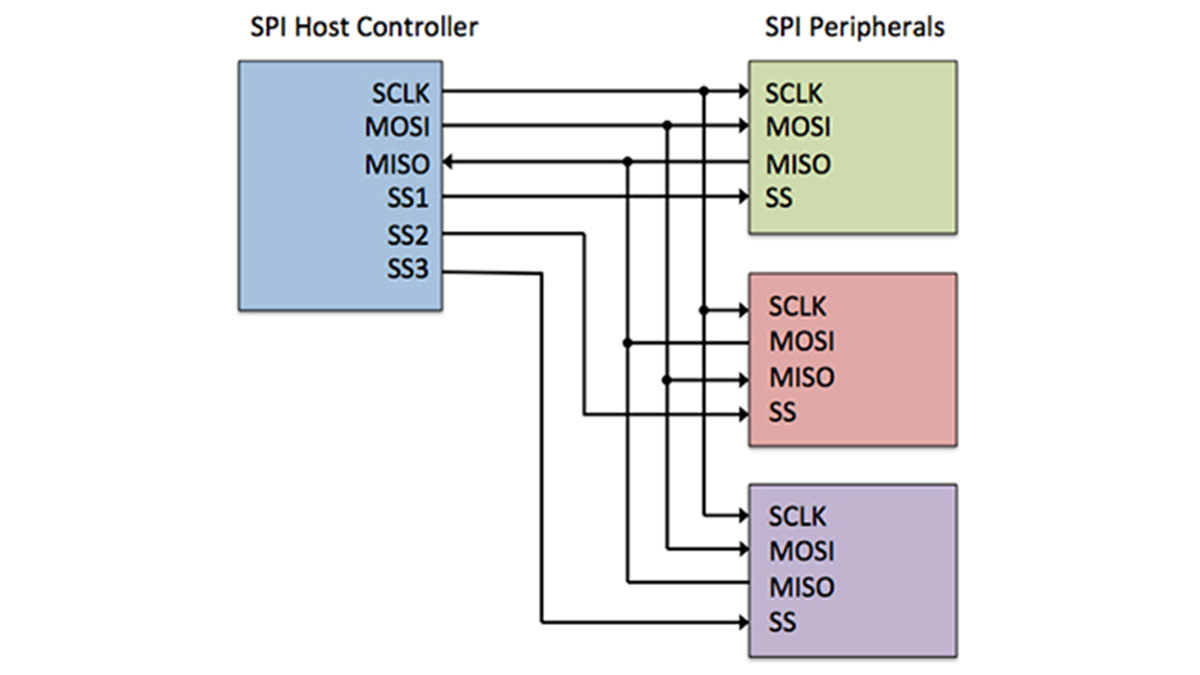Efficient Internet of Things (IoT) designs must balance a host of requirements that often work against each other. Low cost is important, but often supporting all the key features required by the application increases MCU pin count and memory size—two things that work against low cost. Low power is also important for IoT applications where battery operation is a must. Adding features and improving performance can up the power requirement, however. Clearly finding the right balance between all these requirements can be a problem, but that’s just the type of challenge engineers expect from cutting-edge designs.
One of the most effective ways to cut this design Gordian knot is to look for system architecture changes that can frame the problem differently. Using serial interfaces efficiently, for example, can cut the number of pins required by the MCU and help optimize board space, power, and performance. The efficient use of MCU SPI peripherals can do just that. This article will show some illustrative IoT application examples where SPI-style peripherals provide new architectural options that dramatically improve efficiency.

SPI connectivity in cost-oriented embedded designs
One of the most difficult tasks when designing cost-oriented systems is to balance functionality and cost. In MCU-based designs, this conundrum can often manifest itself in the need to add extra pins to the MCU so that additional peripherals can be added to the system. The extra functionality the peripherals provide are important differentiators that, hopefully, make the design more valuable to the user than a design that uses just the standard MCU. After all, the MCU with no external peripherals can be very difficult to differentiate from another MCU-based design.
And while it is true that in many MCU-based designs it’s the software that differentiates one design from another, it’s often the case that an innovative combination of software and external hardware is much more compelling. This can be even more important in cost-oriented designs where increasing the value to the user is more important than just keeping the cost low. In the fast growing and competitive IoT market finding the right value will be critical to product success.
For More Details: Using Efficient SPI Peripherals for Low-Cost MCU-Based IoT Designs
